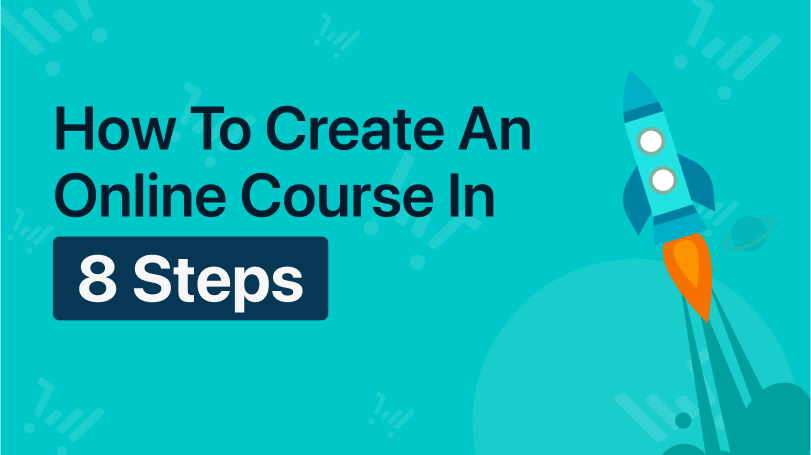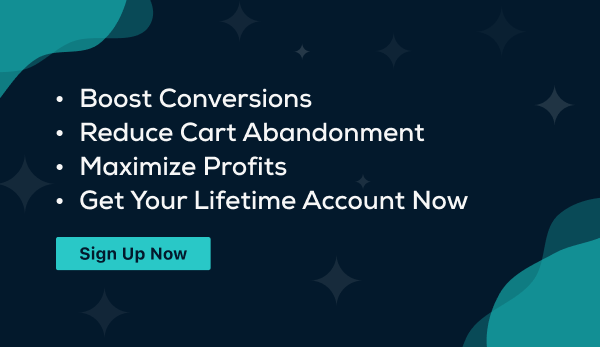Online learning has continued to grow over the past couple of years and has become especially popular with younger learners and mid-career professionals looking to expand their skills. For many, it’s become an alternative to class-based instructions or used to supplement in-class learning.
Students value the affordability and flexibility of online courses, often allowing professionals to complete coursework in self-paced courses or during off hours. A McKinsey report shows a significant market for those feeling their current careers or career search is stalling or are not engaged in their current job. Learning new skills helps them progress in their job, change career pathways, or become an entrepreneur.
With the ease of taking online courses and more great course content being produced, more people are embracing online learning than ever before.
In this article, we’ll provide a step-by-step guide for how to create an online course. This tutorial can help you start your own online business and generate revenue from online courses.
Are Online Courses Still Profitable?
Online course creation can be a lucrative way to generate passive income. Once you create the course and attract the right type of learners, you can sell the course over and over again. While it takes a concerted effort to develop high-quality materials and market them effectively, the eLearning industry continues to grow.
The online education market was valued at $47.2 billion in 2022 and is projected to grow at a compound annual growth rate (CAGR) of 22.7% through 2030, according to Market Research Future. The expansion of high-speed internet and 5G is making online learning available to an ever-growing population.
While the majority of online learning happens in North America, there is considerable growth in Europe and the Asia-Pacific region. One attractive component for course creators is that learners can be from anywhere, generating additional passive income beyond national or regional students.
Is it Hard to Create an Online Course?
It’s surprisingly easy to create online lessons, courses, or a series of courses. While you need to have the expertise and knowledge to develop great online course content, the process to create an online course is not difficult.
For example, ThriveCart Learn enables course creators to build online courses effortlessly using drag and drop functionality to create columns, add buttons, and insert HTML elements to really make your courses stand out.
It’s just as easy to deliver your courses with ThriveCart, too. You can release an entire course upon payment or drip-feed lessons over time, giving you flexible options for complete customization. For example, you may want to release specific lessons at specific intervals or delay the delivery of subsequent lessons for students on a payment plan.
You can also create online courses under different brands or bundle courses. You can create and sell any number of courses or lessons, track students and activity, and set up conversion funnels to improve sales.
Step-by-Step Guide to Create Your Own Online Course
Before you can turn a course idea into a successful online course, you’ll first need the know-how. So, let’s break down each step in the online course creation process so you can start building and selling your own online course.
1. Select Your Course Topic(s)
You can create an online course for just about anything, whether it’s traditional learning or niche markets. Successful entrepreneurs from all walks of life have turned their expertise and passion into courses on all sorts of subject matter. The course topic you select should be an area you know well and can provide real value for learners.
Looking for a great course idea? Here are ten of some of the most popular e-learning niches in 2023:
- Artificial intelligence
- Digital marketing
- Entrepreneurship
- Finance and investing
- Personal development
- Meditation and mindset
- Web design and development
- Cooking
- Home improvement
- Travel and lifestyle
As you can see, you don’t have to be a college professor to create an online course to generate passive income. Within each of the categories, there is a nearly endless list of subcategories. For example, entrepreneurship courses could include online lessons on business models, branding, pricing models, strategic partnerships, and so much more.
Many course creators leverage their experience to create a series of courses for a variety of users based on their knowledge level. Within the same category and subcategory, you can build beginner, intermediate, and advanced course pathways that allow you to progress learners and capture repeat customers.
You will want to choose a topic you’re passionate about and have significant experience with.
Experience will help establish authority in a topic area, which is important to “sell” the idea of your course to potential learners. For example, a cooking course from an Executive Chef is likely going to attract more attention than someone without training.
Passion will help keep learners engaged and progressing through courses and also help with selling more advanced courses. People want to learn new skills, but they can tell when the person teaching the course loves what they do.
2. Research the Market Opportunity and Demand
While you want to pick a topic you enjoy, you also have to make sure there is a target audience for the new courses you create.
There’s no real upside to spending time developing high-quality courses if there’s little demand for what you’re teaching. So, once you’ve narrowed down your course topic ideas, you will need to do some online research to assess market demand.
There are several ways to do this, starting by looking at popular online course platforms to see what types of courses are trending and what people are signing up for. However, this will only show you what’s already been created. You may find niches that are under-served that may be ripe for course creation.
Find What People Are Seeking
Other strategies for finding demand are to see what people are asking about online so that you might be able to provide the answers or guidance they’re seeking. Here are a couple of easy ways to find out what people are looking for:
- Do a Google search for your topic area and look for the questions and answers that show up on the page. Google’s People Also Ask questions can provide great ideas.
- Use Google’s free Keyword Planning Tool to see what topics are popular for key search terms.
- Search for topics on Quora or Reddit to look for recurring themes
- Search LinkedIn or Facebook groups about your topic and look for areas of interest
Find Gaps in High Demand Areas
One mistake some first-time course creators make is assuming if there are already a lot of similar courses on the market that it’s not a good idea to pursue. However, this isn’t always the case. The volume may indicate there’s a significant interest in a particular topic. A better strategy is to see what’s on the market already and where you can add a different approach or find a niche that’s not being served.
3. Ideate the Course Content
Once you’ve settled on the idea, your next step is to focus on your learning objectives and decide on the type and format of your course.
Learning Objectives
You will want to clearly define the learning objectives for each course you create. In other words, what will someone get out of signing up for your course. Describe the learning objectives and goals in a sentence or two and examine them from a learner’s perspective. Make sure to explain the benefits of participating in your online course by explaining specifically what they will learn and how it can improve their knowledge, life, or career.
Types of Courses
You’ll need to decide exactly what you will cover in this course or future courses and what type of course you want to offer. There are plenty of options, including:
- Webinars
- Video courses
- Live-streaming courses
- Mini-courses
- Multi-modules
Do you plan to offer virtual workshops where people can learn together and community forums where learners can share ideas? Will your courses be synchronous (real-time, in order) or asynchronous (learn at your own pace)?
Course Formats
You’ll also have to decide how you will present course content to keep students’ attention and help them learn the subject matter. Both live or pre-recorded video lessons can contain any of the following:
- Slideshow presentations
- Interview style content
- Q&A sessions
- Quizzes
- Guest lecturers
You will also need to consider the value of quizzes, assessments, and workbooks or guides that learners may need.
Certifications
One popular option for course creators is to offer two tiers for each course. The first tier allows students to take the course and learn, while a second tier — at a higher price point — awards a certificate of completion demonstrating mastery of the material.
4. Write the Course Outline
It’s crucial for online course creators to research their topics and have a deep understanding of the subject matter. Online learners will rely on your in-depth expertise, so you really do need to be a subject matter expert.
The next step is to break down the course into sections. Just like when writing a research paper, you want to start with a course outline to ensure that students can learn what you are promising. You will also need this outline to develop individual modules and to help market your course.
Your course outline should cover the entire course as well as individual lessons within the course. You will want to guide your audience step by step in a logical pattern to meet learning objectives. Online courses typically start with an introductory session to explain course objectives, have multiple modules which build on student knowledge learned in previous lessons, and a conclusion to summarize what’s been learned (and maybe promote the next online course).
You can think of it like a book. Each lesson is a different chapter that advances the story.
For each lesson, you will want to define:
- The specific training you will provide
- A description of what you will discuss
- The learning objectives
- The type of content you will deliver
- How you will assess learning (especially for certification courses)
- Any related materials, such as workbooks, guides, or supplemental materials that can be linked to or made available for purchase
- Learner feedback mechanisms
One effective strategy is to employ sales techniques for each lesson or module. An example would be SPIN selling where sellers organize their approach by following a logical progression from situation, problem, implication, and need-payoff.
5. Select an Online Course Creation Platform
One of the biggest decisions you’ll make is to select the right online course platform to host your courses. There are many choices for a learning management system (LMS), each providing a slightly different learning experience for students.
When evaluating different platforms, you will want to take a close look at these functionalities:
- Design and editing software
- Content type offerings
- Integrated marketing tools
- Flexible plan course options
The two main options for hosting your online courses is to either self-host it on your own website, or sign up for an online course marketplace—the latter of which will most likely charge a percentage of sales for each course sold, ranging from 3% up to a staggering 75% depending on how users were acquired.
By self-hosting your online courses, however, you avoid such fees. You also retain total control over your online course, branding, and pricing. This allows you to keep your content within your preferred venue. For example, ThriveCart allows users to build and host online courses, showcase offers on course landing pages, easily funnel customers through the checkout process, and provide buyers with instant (or timed) course access–and all of these actions are included in the standard ThriveCart platform. Even more functionalities are included with ThriveCart Learn+ for a one-time fee of $195.
6. Build and Launch Your Online Course
It’s time now to create and launch your online course. Based on the platform on which you choose to build, you may be able to leverage e-learning templates that make it easier to create lessons. The best platforms will allow you to customize the lessons any way you want.
The formats you choose for each lesson will also determine how you build your course, so you will need to make sure you have the right tools for the job. If you plan to use video content, you will have to make sure you have-quality cameras to record your presentation and video editing software to add visual elements and mix them with slideshows or other elements. If you are narrating portions, you will also want to make sure you have a high-quality microphone and a place to record audio that eliminates background noise.
Interactive elements like video, audio, quizzes, games, and graphics can help keep students focused and moving through lessons.
Once your high-quality course is ready to go, it’s time to create a marketing strategy to launch it successfully. You’ll need to find your target audience and create a compelling message to get them interested.
7. Market and Sell Your Course
While you can celebrate successfully creating your course, your job is far from complete. You need to have a solid marketing strategy to make learners aware of your course options and to sign up.
Optimize Your Website
You will want to boost your online presence by optimizing your course website with search engine optimization (SEO) strategies to help get found by search engines. Many first-time course creators overlook this essential step. Most people searching for information start with a search engine and that generally means Google. Google has an 85% market share, so making sure your online presence aligns with Google’s algorithms is crucial.
Be Active on Social Platforms
You’ll also want to seek out potential students. A good strategy for that is to be active in online communities of your target audience. Social platforms like Facebook groups, LinkedIn groups, and online forums are good places to market your online course.
Publish Lead Magnets
Lead magnets can take many forms but can be highly effective for generating interest. With a lead magnet, you are providing something of value in return for contact information, such as an email address that you can use to nurture and market your online courses.
Examples include webinars, podcasts, discount codes, mini-courses, and ebooks.
Utilize Email Marketing
A solid email marketing strategy is a proven winner as part of your digital marketing tool kit. Lead magnets can help you develop an email list and send targeted messages to potential customers for your new courses.
Email is an inexpensive way to drive traffic to your course website or sales page.
Implement Affiliate Marketing
With affiliate marketing, you offer publishers and influencers the opportunity to promote your online courses and receive a commission when someone signs up. This is an easy way to extend the reach of your marketing and gain access to audiences of others in related fields.
ThriveCart has robust tools to create, launch, and manage affiliate marketing campaigns.
Strategize Ad Campaign Spending
Targeted advertising can help get your message in front of the right people. Spending some money on Google Ads can help get your online courses listed at the top of search results pages ahead of competitors. Social media ads can put your online courses in front of select audiences.
Search engines and social media platforms offer robust targeting tools so you can narrowly focus your ad spending to avoid wasting money on people who would not have an interest in your online course.
8. Gather Feedback and Optimize
Finally, you will want to build in an easy way to gather feedback on your online courses. Feedback is essential to make sure students are meeting their learning objectives and finding value in what you are offering.
This information can be valuable to improve or update your course material, optimize the structure of future courses, and give you ideas for other modules or courses you can create.
Feedback can also help you with your marketing strategy. When participants have positive things to say about your online course and what they learned, this information can be used as a testimonial to provide social proof and encourage others to sign up.
Boost Your Online Course Sales with ThriveCart
Following these steps can get your online course up and running and ready to generate passive income. That’s where ThriveCart Learn excels. You get powerful functionalities to create a high-quality, high-converting online sales funnel to boost sign-ups and subscriptions for online course sales.
Entrepreneurs can build robust sales funnels and embed shopping carts on websites and landing pages with automated payment processing for credit cards and popular online payment services. You can also leverage other strategies to generate even more sales, including:
- Affiliate marketing programs
- Profit boosters, such as one-click upsell funnels
- Limited-time offers
- Free trials for introductory offers
- Subscription management for ongoing membership payments
- Automatic follow-up for visitors that place course in the cart but do not complete a purchase
- Automated notifications for subscription payment due dates or credit card expirations
With ThriveCart, you also get powerful real-time metrics to track and forecast revenue, allowing you to see when signups occur and watch as money flows in thanks to your successful online course.
With ThriveCart Learn, it’s easy to create online courses, manage your assets and students, and build a sales funnel that optimizes conversion rate. ThriveCart Learn is included at no additional cost with the ThriveCart platform, and ThriveCart Learn+ provides even more advanced features.Learn more about ThriveCart and sign up today with this special offer.






